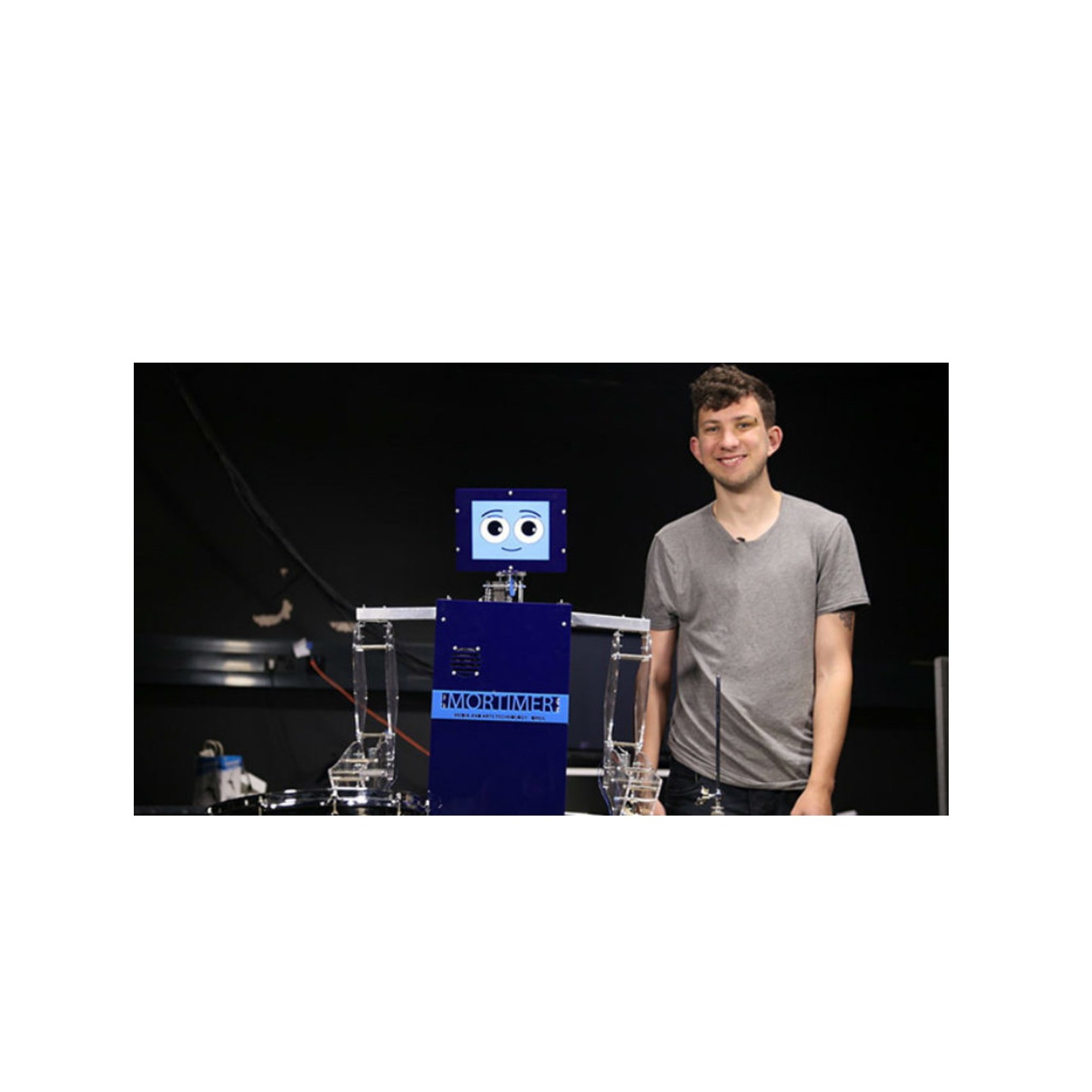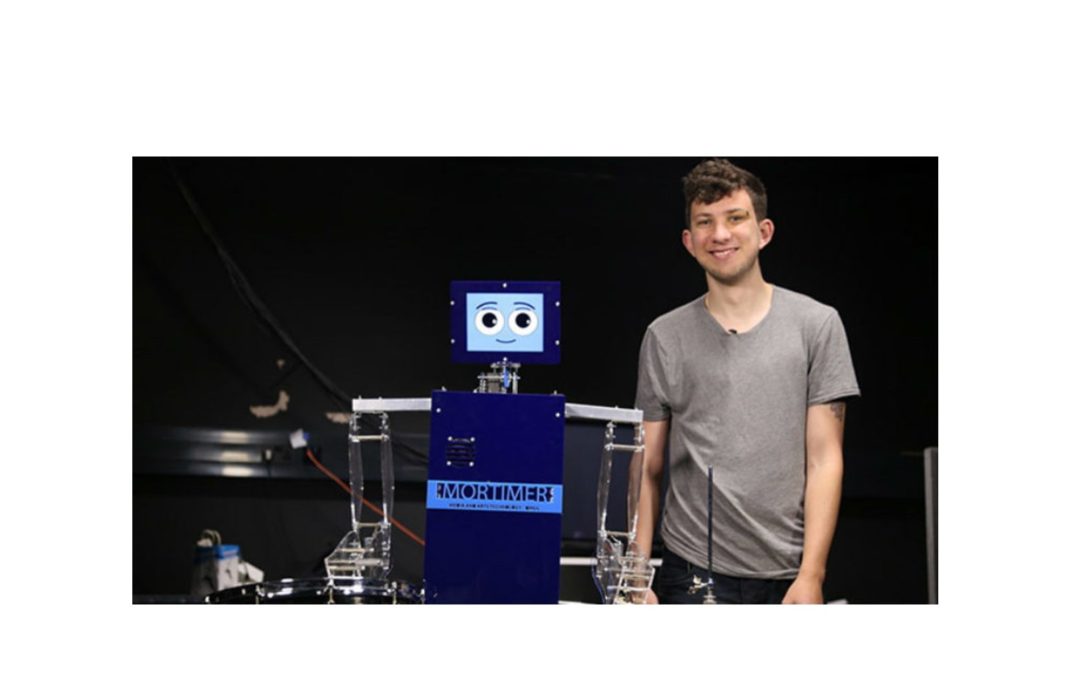Mortimer the drumming robot was constructed a few years ago by Louis McCallum, student from Queen Mary University in London. He was an unique robot because he could play drums but not only as the more “analog” drum machine. Mortimer was able to work with musicians and play together like a bandmember! He was created to answer the question: how can people and machines cooperate when it comes to creating something? He was able to share his feelings and ask about things to improve, repeat or make next time when they play.

Now it came time for the modification of the previous task. Now Mortimer will check how the social media affects the relations between robots and humans. During the study, two groups of participants were chosen. One group was sent a Facebook friend request from Mortimer allowing the robot to tag them in pictures taken during the session. The other group was not sent a request and had no contact with the robot outside of the sessions. Participants took part in six weekly sessions in a controlled studio environment and were instructed to stay for a minimum of 20 minutes but could optionally stay for up to 45. They were greeted by Mortimer, who communicates via speech synthesis software, and used a tablet to interact with him.During each session, a picture of Mortimer and the participant playing was taken automatically by a webcam in the lab and an accompanying comment was generated. In some instances, the participants also took a selfie with Mortimer and posted it to their own Facebook accounts. From the Facebook data, there were considerably more ‘likes’ for posts made by a user as opposed to one of Mortimer’s posts that the user was tagged in.Dr McCallum said: “One of the most interesting findings was that posts by human participants about the music sessions between them carried significantly more weight within their networks than posts by the robot itself. This suggests a discerning approach to generated posts that is especially relevant in today’s world of social media bots, automated content and fake news.”
We think that it’s great to see drums, robots and social media in the science’s service!
Share









